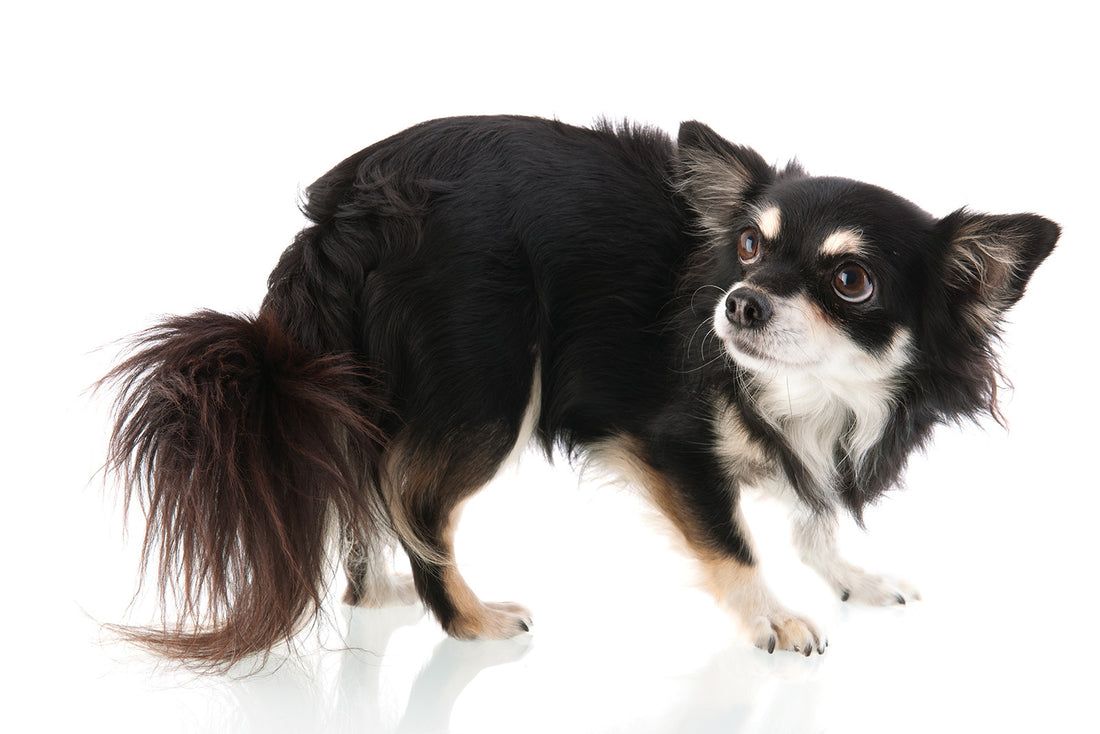
How To Calm Your Anxious And Fearful Dog
Share
If your dog startles at loud sounds and steps back when being approached by a stranger, then he's exhibiting a natural stress response that is totally healthy. This is a dog's normal reaction to a stressful and unfamiliar event, enabling him to prepare to fight.
However, in today's world, a new stress response is widely common in companion dogs. If your dog has chronic, long-term anxiety and phobias, chances are he is exhibiting a maladaptive stress response. These fear-based conditions are often in the form of aggression, separation anxiety, and storm and/or noise phobia.
A maladaptive stress response can trigger both physical and emotional diseases that can potentially shorten his life and affect his quality of life. Chronic stress can weaken his immune system, making him prone to different infections. It can alter the vital flow of blood through his organs and can trigger compulsive behaviors.
Signs of Maladaptive Stress Reactions in Dogs
Dogs can be assumed that they are fearful or anxious when they are exhibiting these behaviors more frequently.
- Crying or whining
- Panting
- Drooling
- Shaking
- Ears held back
- Vigilance
- Hiding
- Tucking tail
- Inappropriate elimination
- Pacing
- Looking away (from a threat)
- Loss of appetite
- Lip licking
- Yawning
Adding to these behaviors, if your dog has a storm phobia, during a thunderstorm, he may exhibit trembling, try to stay close to you, engage in destructive behaviors, and try to harm himself.
Storm phobia is a type of noise phobia. A noise phobia is defined as a profound and sudden, extreme response to noise, manifested as intense avoidance or escape, or any anxiety behaviors. Some dogs may react by freezing and withdrawing, while others may respond by crashing through windows which can be really extreme. These reactions can indicate damage to nerve cells.
Common behaviors of separation anxiety in your dog include the need to be within a few feet of you at all times, a noticeable change in mood when he detects you're leaving the house, and frantic greeting whether you've been away for several hours or even for just a few minutes.
Avoidance
Tips on how to help your dog avoid the triggers of his phobia and anxiety.
For a dog that has a thunderstorm phobia, you can make a "safe room". It is a place for him to go whenever there is a thunderstorm whether you're in the house or not. This will limit his exposure from thunderstorms. The room should have no windows, or have covered windows, to avoid him from seeing the storm. If possible, make the room soundproof. The door should be left open for him to easily access it. You could also leave some toys, food, and water for his consumption.
For a dog with noise phobia, you could play soothing and calming music that could relax him and reduce the impact of stressors. Make sure that this kind of music doesn't trigger any of his stressors.
Desensitization
Desensitization involves exposing your dog to an anxiety trigger to a certain level until a fear response is diminished.
An example of desensitizing a dog who is storm-phobic is by playing a CD that produces similar storm sounds. It is best to do this at a time of a year where there is a fewer storm.
For a dog that has a separation anxiety, you can desensitize him by showing him the sights and sounds of you preparing to leave. Observe him carefully and determine which action cues his anxiety.
Counterconditioning/Behavior Modification
Counterconditioning is done by repeatedly pairing a negative trigger with a positive one until your dog reacts positively to it.
For example, if your dog is exhibiting fear during a storm or when he hears a loud noise, make him do command and give him a reward if he does. This activity distracts him from the storm sounds and you are soothing him while he's showing anxiety.
Another way is by keeping him busy. Play with him or give him a recreational bone as this will also distract him. Note that if your dog reacts rather intensely to sounds, then you might not be able to perform this for him.
